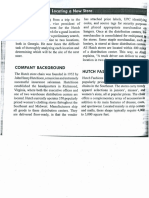Occupant Load Factor Table
Uploaded by
Damir MalkočevićOccupant Load Factor Table
Uploaded by
Damir MalkočevićTable 7.3.1.
2 Occupant Load Factor
2
Use
(ft per person)
(m per person)
Assembly Use
Concentrated use, without fixed seating
7 net
0.65 net
Less concentrated use, without fixed seating
Bench-type seating
15 net
1 person/18
1.4 net
1 person/455 linear mm
linear in.
Fixed seating
Number of fixed seats
Number of fixed seats
Waiting spaces
See 12.1.7.2 and 13.1.7.2.
See 12.1.7.2 and 13.1.7.2.
Kitchens
100
9.3
Library stack areas
100
9.3
Library reading rooms
50 net
4.6 net
Swimming pools
50 (water surface)
4.6 (water surface)
Swimming pool decks
30
2.8
Exercise rooms with equipment
50
4.6
Exercise rooms without equipment
15
1.4
Stages
Lighting and access
catwalks, galleries,
15 net
100 net
1.4 net
9.3 net
11
50
4.6
Classrooms
20 net
1.9 net
Shops, laboratories, vocational rooms
50 net
4.6 net
Day-Care Use
35 net
3.3 net
Inpatient treatment departments
240
22.3
Sleeping departments
120
11.1
Ambulatory health care
100
9.3
Detention and Correctional Use
120
11.1
200
18.6
gridirons
Casinos and similar
gaming areas
Skating rinks
Educational Use
Health Care Use
Residential Use
Hotels and dormitories
Apartment buildings
200
18.6
Board and care, large
200
18.6
General and highhazard industrial
100
9.3
Special-purpose
industrial
NA
NA
Business Use
100
9.3
In storage occupancies
NA
NA
In mercantile occupancies
300
27.9
In other than storage and mercantile occupancies
500
46.5
Sales area on street
floorb,c
30
2.8
Sales area on two or more street floors c
40
3.7
Sales area on floor below street floor c
30
2.8
Sales area on floors above street floor c
60
5.6
Floors or portions of floors used only for offices
See business use.
See business use.
Floors or portions of floors used only for
storage, receiving, and shipping, and not open to general
public
300
27.9
Mall buildingsd
Per factors applicable to use of spacee
Per factors applicable to use
of spacee
Industrial Use
Storage Use
Mercantile Use
NA: Not applicable. The occupant load is the maximum probable number of occupants present at any time.
a
All factors are expressed in gross area unless marked net.
b
For the purpose of determining occupant load in mercantile occupancies where, due to differences in grade of streets on
different
sides, two or more floors directly accessible from streets (not including alleys or similar back streets) exist, each such floor is
2
2
permitted to be considered a street floor. The occupant load factor is one person for each 40 ft (3.7 m ) of gross floor area of
c
sales space. For the purpose of determining occupant load in mercantile occupancies with no street floor, as defined in 3.3.239,
but with access directly from the street by stairs or escalators, the floor at the point of entrance to the mercantile occupancy is
d
considered the street floor. For any food court or other assembly use areas located in the mall that are not included as a portion
of the gross leasable area of the mall building, the occupant load is calculated based on the occupant load factor for that use as
specified in Table 7.3.1.2. The remaining mall area is not required to be assigned an occupant load.
The portions of the mall that are considered a pedestrian way and not used as gross leasable area are not required to be assessed an
occupant load based on Table 7.3.1.2. However, means of egress from a mall pedestrian way are required to be provided for an
occupant load determined by dividing the gross leasable area of the mall building (not including anchor stores) by the appropriate
lowest whole number occupant load factor from Figure 7.3.1.2(a) or Figure 7.3.1.2(b).
Each individual tenant space is required to have means of egress to the outside or to the mall based on occupant loads calculated by
using the appropriate occupant load factor from Table 7.3.1.2. Each individual anchor store is required to have means of egress
independent of the mall.
FIGURE 7.3.1.2(a) Mall Building Occupant Load Factors (U.S. Customary Units).
FIGURE 7.3.1.2(b) Mall Building Occupant Load Factors
(SI Units).
Copyright 2006, National Fire Protection Association
You might also like
- 409747576-Table-VII-MULTIPLIER NBCP Rule 7No ratings yet409747576-Table-VII-MULTIPLIER NBCP Rule 71 page
- BP 344 Accessibility Law With Illustrations100% (1)BP 344 Accessibility Law With Illustrations30 pages
- E.N.G.I.N.E.E.R., Inc.: Basic Mepf Design For Mix-Use BuildingsNo ratings yetE.N.G.I.N.E.E.R., Inc.: Basic Mepf Design For Mix-Use Buildings83 pages
- General Requirements For Occupant Loads and Exits100% (1)General Requirements For Occupant Loads and Exits2 pages
- Architect Philippines - Parking and Loading Space RequirementsNo ratings yetArchitect Philippines - Parking and Loading Space Requirements4 pages
- Architectural Space Factors For Areas and SpacesNo ratings yetArchitectural Space Factors For Areas and Spaces4 pages
- NATIONAL BUILDING CODE - Classification of BuildingNo ratings yetNATIONAL BUILDING CODE - Classification of Building4 pages
- Space Programming: Space Requirement Group Category User's Capacity Furniture and Equipment Total Area100% (1)Space Programming: Space Requirement Group Category User's Capacity Furniture and Equipment Total Area26 pages
- Table VII.G.2. Conversion Table of Gross Floor Area (GFA) To Total Gross Floor Area (TGFA)No ratings yetTable VII.G.2. Conversion Table of Gross Floor Area (GFA) To Total Gross Floor Area (TGFA)2 pages
- National Building Code of The Philippines (Pd1096)100% (1)National Building Code of The Philippines (Pd1096)5 pages
- 5.2 Graphic Spatial Programming: Table No. 12 Space Programming - Administrative BuildingNo ratings yet5.2 Graphic Spatial Programming: Table No. 12 Space Programming - Administrative Building10 pages
- Calculating Occupant Loads For Assembly Occupancies March 2022No ratings yetCalculating Occupant Loads For Assembly Occupancies March 20228 pages
- Occupant Load Determination For Gyms, Health Clubs & Yoga StudiosNo ratings yetOccupant Load Determination For Gyms, Health Clubs & Yoga Studios3 pages
- Table 3.13.: Occupant Load Factors and Exit Capacity FactorsNo ratings yetTable 3.13.: Occupant Load Factors and Exit Capacity Factors3 pages
- Ahmed Shaat Construction Manager Resume.No ratings yetAhmed Shaat Construction Manager Resume.4 pages
- 1 Hour Free Parking Map - 28 May 2022 To 30 June 2023No ratings yet1 Hour Free Parking Map - 28 May 2022 To 30 June 20231 page
- Mindset for IELTS Level 1 Student_s Book (1)-36-44No ratings yetMindset for IELTS Level 1 Student_s Book (1)-36-449 pages
- Classwork April 26: 1. Read The Script Below and Draw On The Map The Features DescribedNo ratings yetClasswork April 26: 1. Read The Script Below and Draw On The Map The Features Described2 pages
- I-REMIT Branches, Tie-Ups, Agent: Page 1 of 6No ratings yetI-REMIT Branches, Tie-Ups, Agent: Page 1 of 66 pages
- Latihan Soal Kisi Kisi Ujian Sekolah Bahasa InggrisNo ratings yetLatihan Soal Kisi Kisi Ujian Sekolah Bahasa Inggris4 pages
- G-30, Rajnigandha Apartment, Ground Floor, G.T. Road, Sahibabad-201005 (Ghaziabad) 9213849041No ratings yetG-30, Rajnigandha Apartment, Ground Floor, G.T. Road, Sahibabad-201005 (Ghaziabad) 92138490416 pages
- H2 2023 ColliersQuarterly Surabaya RetailNo ratings yetH2 2023 ColliersQuarterly Surabaya Retail5 pages

























































































